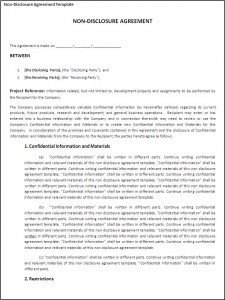In other words, it reveals how much net (after-tax) income you’ve earned in comparison to shareholder equity. This is a great way to measure the efficiency with which your business is able to use assets to create profits. If a company has been borrowing aggressively, it can increase ROE because equity is equal to assets minus debt. A common scenario is when a company borrows large amounts of debt to buy back its own stock. This can inflate earnings per share (EPS), but it does not affect actual performance or growth rates.

ROE is a metric of how well the company utilizes its equity to generate profits. Return on Equity (ROE) is the measure of a company’s annual return (net income) divided by the value of its total shareholders’ equity, expressed as a percentage (e.g., 12%). Alternatively, ROE can also be derived by dividing the firm’s dividend growth rate by its earnings retention rate (1 – dividend payout ratio). The formula used to calculate the return on equity (ROE) metric is relatively straightforward, as it divides net income by the average shareholders’ equity balance in the prior and current period. While debt financing can be used to boost ROE, it is important to keep in mind that overleveraging has a negative impact in the form of high interest payments and increased risk of default. The market may demand a higher cost of equity, putting pressure on the firm’s valuation.
Return on Equity (ROE) Ratio FAQs
ROE will always tell a different story depending on the financials, such as if equity changes because of share buybacks or income is small or negative due to a one-time write-off. For example, in the fourth quarter of 2020, Bank of America Corporation (BAC) had an ROE of 8.4%. According to the Federal Deposit Insurance Corporation (FDIC), the average ROE for the banking industry during the same period was 6.88%. Both the three- and five-step equations provide a deeper understanding of a company’s ROE by examining what is changing in a company rather than looking at one simple ratio.

[box]Strategic CFO Lab Member Extra
Access your Exit Strategy Checklist Execution Plan in SCFO Lab. Our goal is to deliver the most understandable and comprehensive explanations of financial topics using simple writing complemented by helpful graphics and animation videos. At Finance Strategists, we partner with financial experts to ensure the accuracy of our financial content. Take some time and do some further reading to understand the following concepts as well for optimal success. Our experts choose the best products and services to help make smart decisions with your money (here’s how).
Return on Equity Calculator (ROE)
The ROE of the entire stock market as measured by the S&P 500 was 6.95% in the fourth quarter of 2020, as reported by CSI Market. A first, critical component of deciding how to invest involves comparing certain industrial sectors to the overall market. When solving Return on equity, equation solutions only form part of the problem. Thus, one must be able to apply the equation to a variety of different and changing scenarios. Finance Strategists is a leading financial literacy non-profit organization priding itself on providing accurate and reliable financial information to millions of readers each year.
What is a good return on equity?
What is a good return on equity? While average ratios, as well as those considered “good” and “bad”, can vary substantially from sector to sector, a return on equity ratio of 15% to 20% is usually considered good. At 5%, the ratio would be considered low.
https://accounting-services.net/is-angel-number-111-a-good-sign-for-future-love/ is a two-part ratio in its derivation because it brings together the income statement and the balance sheet, where net income or profit is compared to the shareholders’ equity. The number represents the total return on equity capital and shows the firm’s ability to turn equity investments into profits. To put it another way, it measures the profits made for each dollar from shareholders’ equity.
Return on Total Equity
The key to finding stocks that are lucrative investments in the long run often involves finding companies that are capable of consistently generating an outsized return on equity over many decades. Calculating return on equity, as shown below, can help investors find potential investable companies. However, it’s important to note that no single financial ratio provides an all-inclusive measurement of a company’s financial performance. All else being equal, a business with a higher return on equity is more likely to be one that can better generate income with new investment dollars. ROE is shown as a percentage representing the total return on a company’s equity capital. ROE is one of the most important financial ratios for the stock investor hunting good value companies.